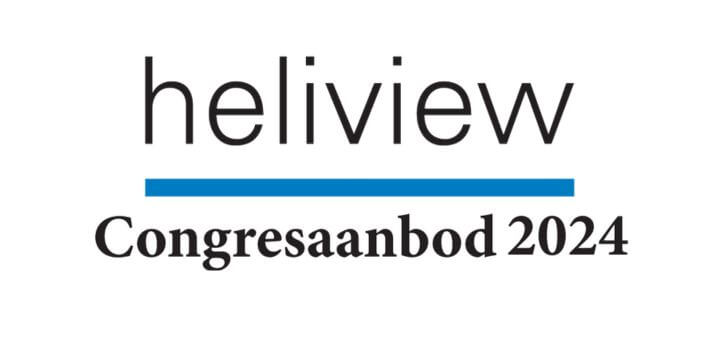It was a bitterly cold morning in December 1903 when the Wright brothers took to the air over Kitty Hawk, North Carolina to forever change the course of human history. Both brothers flew the Wright Flyer that day travelling a total distance of 1,347 feet in 4 attempts, and entering the annals of history as the first humans to achieve powered and controlled flight. Their achievement launched a series of incredible leaps from the first biplanes to Sputnik in 1957 and reaching a zenith in 1969 when Armstrong and Aldrin walked on the surface of the Moon.
The leap from that first powered flight of 120 feet to a return trip of 953,054 miles to the Moon took the human race less than 66 years to accomplish, representing a doubling in distance approximately every 2 and a half years. The history of powered flight both represents and demonstrates many vital aspects of human nature: creativity, ingenuity, ambition, determination and willingness to embrace change. Without acceptance of these changes, our innate ability to see beyond existing limitations and strive for a better solution would become meaningless as time passed – leaving us still gazing upwards at the stars in wonder.
Evolution but no quantum leaps
That exponential development curve in the history of flight has repeated itself in many other areas from medical science to cell phones. We live in an always-on and instant-access consumer society in the most developed nations of the world, where information flows from producer to consumer at speeds and over distances previously unimaginable. Computing and data networking capabilities have both advanced at rates which have enabled them to keep pace with the rate of information flow, but storage, the most vital component of the information age has not. Improvements in media density have enabled more data to be kept on individual disks, but the rate of access to data blocks on those disks has barely changed.
The technology impact of slow data access on today’s instant-access society starts with the server CPU and from there permeates to all other aspects of the infrastructure which have to be designed with data locality in mind – aspects from database memory caches to batch jobs to decision support systems are all designed to mitigate slow data access. That 5-10msec disk latency compared with a PCIe flash card read at 50-100usec and a CPU memory read at 70-250nsec can be contextualized if we make the 70nsec memory read the equivalent of walking down the street to your local coffee shop. On that comparative basis, the PCIe flash card read would be the equivalent of walking a half marathon and the disk read would be the equivalent of walking from London to San Francisco or from Sydney to Tokyo. That’s the amount of relative time server CPUs have to wait for data from disk arrays whilst executing application code, and that’s why things needed to change.
Information Acceleration
Two years ago the widely-held storage industry view was that flash was too expensive and either hybrid disk/flash or monolithic disk arrays were still the right answer for the enterprise. Fast-forward to 2014 and there has been a seismic shift in posture where the large disk array vendors now have an all-flash array (AFA) offering, in some cases through acquisition and in others through replacing mechanical disk with flash in existing products. These are evolutionary steps from disk array vendors in response to a highly disruptive threat to their existing revenue streams and future maintenance revenues.
In that 2 year timeframe Pure Storage has launched its AFA product line with a ground-breaking set of capabilities that changes the way in which business can access their data. Performance is a key capability of the Pure AFA, built on the native low latency of NAND flash memory compared with disk but it is not the most important. Pure has designed its AFA from first principles with no legacy architecture constraints or code paths designed for mechanical disk limitations, it is primarily designed to exceed 99.999% availability with non-disruptive software and hardware upgrades/replacements with no loss of performance. The Pure AFA has already exceeded the resilience capabilities of the leading disk arrays developed over the last 10 years, without any of the constraints generally attached to vendor claims on levels of uptime and availability.
The focus on enterprise-class reliability led the Pure AFA design team in some instances to make decisions which sacrificed ultimate performance to improve overall resilience, such as the use of non-volatile RAM to commit two copies of written data rather than using controller memory and a separate UPS, or the day one capability to tolerate two flash disk failures in the same shelf. This design ethos and overall feature set strongly differentiate the Pure AFA from other AFAs and existing disk arrays in the market. The primary product features that are currently shipping and provided at no extra cost include:
- No-disruptive operation for all hardware and software upgrades and replacements with no loss of performance.
- Measured reliability >99.999% for production arrays based on call-home telemetry.
- All stored securely data encrypted with the AES cipher and 256-bit keys.
- Performance from 100,000 to 200,000 32k IOPS depending on AFA model.
- Space-efficient snapshots of existing volumes for point-in-time copies.
- In-line data deduplication and compression to reduce datasets to the most efficient size.
- Post-process data reduction to further reduce the stored dataset size.
- Asynchronous data replication to preserve data remotely without impacting performance.
- Product simplicity and ease of use with reference manual on a business card.
- Capacity upgrades carried in by an engineer, no forklift required.
- Industry-leading customer support as measured by Satmetrix Net Promoter Scores.
Why Right Now?
Modern businesses monitor and measure themselves as closely as they do their success with customers, as this allows them to respond and adapt to changing market forces and fluctuations in customer loyalty. Using Pure’s storage technology, more informed decisions can now be taken in a very short time, rather than waiting for the month-end batch run or tonight’s data load to complete. The high performance and 99.999%+ reliability of the Pure AFA can unlock the real value of business data but it can also change the way your business operates. Instead of being held up by existing storage systems, how would your business change if it could:
- Execute real-time fraud pattern and credit checks on every card transaction.
- Understand the company’s complete P&L position and credit risks in real time.
- Perform sentiment analysis of all customer social media as it happens.
- Change a trading model quickly based on back testing all historical tick data.
- Move all decision support system(s) to the production data warehouse.
- Run 50% more virtual desktops on the same computing hardware with better user experience.
- Have 30 copies of the same database being used by separate development teams with no performance impact and space-reduced to less than the size of 2 copies.
- Cut its storage power usage by 90% and reclaim 80% of storage datacenter space.
Many vendors in the storage industry are investing heavily in advertising and marketing, rather than engineering to position their AFA product as the market leader. We would encourage you to read the latest Gartner MQ for Solid State Arrays; embrace the latest thinking and evaluate the Pure AFA with your datasets to decide for yourself.
PureAFA is deelnemer aan Infosecurity, Storage Expo en The Tooling Event 2014.
Op de hoofdpagina Beursspecial vertellen ook andere beursdeelnemers aan ICT/Magazine over wat hen beweegt: van spionage tot wielrennen en pionieren.







